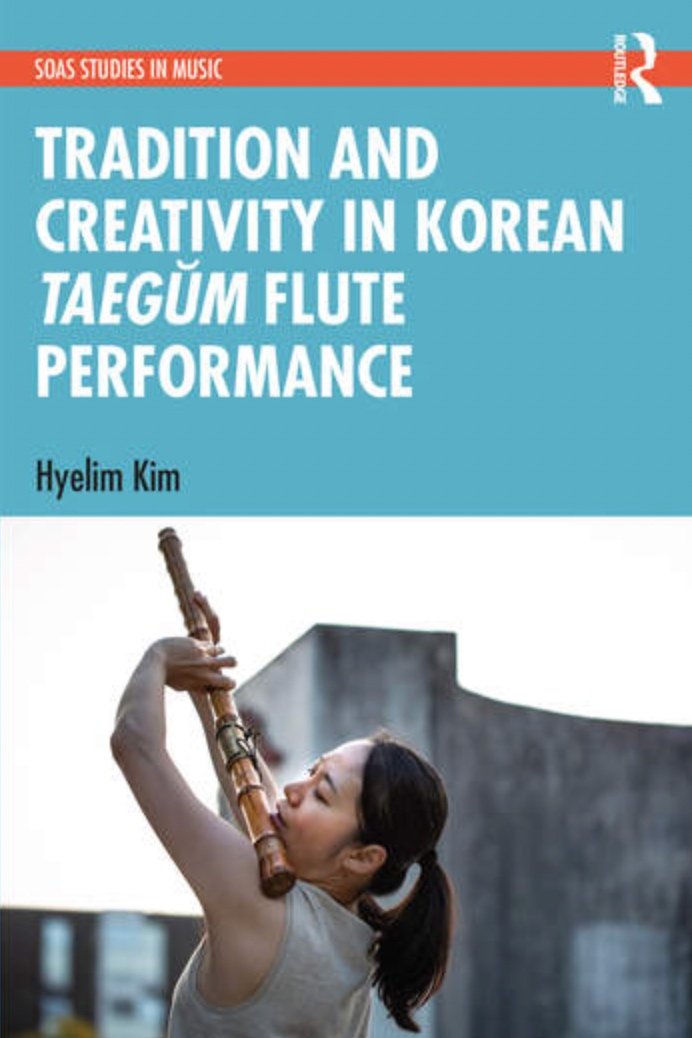Publications
Tradition and Creativity in Korean Taegŭm Flute Performance (2021, Routledge)
describes the taegŭm as a representation of Korean culture in the contemporary world. Through the development and performance of creative works, this horizontal bamboo flute reflects both tradition and contemporary creativity. The first part of the book outlines the historical background of the taegŭm. The author illuminates the potential future of the Korean flute in a globalised world through the analyses of three musical works for taegŭm. The second part of the book draws on approaches of Practice Research within ethnomusicology and sociology to examine the ways in which the taegŭm tradition interacts with, and responds to, different genres in performance. Documenting collaborative encounters with musicians from three musical cultures: jazz, Western art and electroacoustic music, the result is an innovative exploration of the musical and social relationships between composers, performers and audiences in intercultural performances, contrasting traditional uses of the taegŭm with perspectives on its use today.
“Different subjects and themes in the book are appropriately reflected or represented through certain pieces of music, and readers would gain a better understanding of the analyses and discussions in certain chapters by familiarising with the works in question. ”
Kyŏngp'ungnyŏn -traditional
Chapters 1, 2, and 3 of the book summarise the historical background of the taegŭm and its traditional performance practices.
Ripple - composed by Youngdong Kim
Chapters 4, 5, and 6 of the book analyse and study the works of composers who wrote works with the taegŭm as the main instrument. Among them, Chapter 4 dealt with the works of the composer and taegŭm player Youngdong Kim.
Nim - composed by Dae-seong Kim
In Chapter 8 of the book the author applies a practical research methodology to the process of collaboration with the composer Dae-seong Kim.
Imyŏn - composed by Hyelim Kim
A project with the renowned Australian percussionist Simon Barker is analysed in Chapter 7. In this performance the percussion player featured is Ji-hye Kim.
Gyeonggye: Border - composed by Bruce Crossman
The book explores the various possibilities of creating intercultural communication between Korean traditional music and other musical cultures. This work is an example of a long-standing cultural exchange between the author and Australian academic and composer Bruce Crossman.




